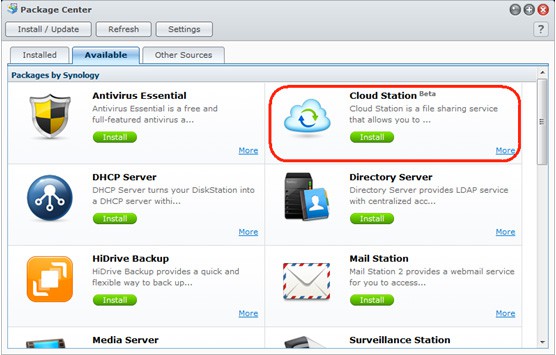
- Roll out synology cloud station drive group policy install#
- Roll out synology cloud station drive group policy update#
- Roll out synology cloud station drive group policy download#
(Settings and data are saved in the mapped folder)
Roll out synology cloud station drive group policy download#
There is no auto-update feature either, so when a new version comes out, you will need to download a new version of the Docker Unifi Image. You can’t just download the latest version and run the installer inside the Docker container. Updating the Unifi Controller on the Synology is a little bit different compared to a Linux/Windows/Rasberry Pi installation. The Unifi Controller will start automatically after the reboot. If this controller is still not accessible then it might be necessary to restart your Synology NAS. You should now be able to access the Unifi Controller. Select Ports > Custom and again Custom (button).Click on Edit Rules to open the ports for the Unifi Controller. Below that you will find the Firewall Profile. Here you will see the Enable Firewall is turned on. You don’t need to turn the firewall off, you only need to open some ports to allow traffic to the Unifi Controller. This will prevent you from accessing and using the Unifi Controller. Configure your Synology Firewallīy default, the Synology firewall is turned on. So if you can open your NAS on then you can find the Unifi Controller on. The Unifi Controller will now start and is accessible on your Synology address on port 8443. Scroll all the way down and change the following values:.This way we can reach the Unifi Controller on the same IP Address as our Synology NAS.

In the column, Mount Path enter /unifi Network SettingsĬlick on the network tab and select Use the same network as Docker Host. Next, we need to map the newly created folder. We need to map the file storage of the Docker to the disk of Synology.
Roll out synology cloud station drive group policy update#
This way the Unifi Controller will be restarted when your Synology turns is rebooted (after an update for example) Set Disk VolumeĬlick on the tab Volume. This is really recommended if you are running more applications on your NAS. Enable resource limitation, this way the Unifi Controller can’t use all the resources of the Synology.Give the Container a name, like Unifi-Controller.We need to change some settings so we can reach the Unifi Controller from another computer (then only from the Synology), store the files somewhere, and limit the resources. When the download is complete, select the image and click on Launch: Configure the Unifi ContainerĪfter you clicked on Launch, the container configuration wizard will start. It may take a few minutes to download the image, you can see the progress on the Image tab. Installing Unifi Controller on Synology Starting the Unifi Container Image We are going to download the Unifi Controller image (700Mb) and configure the Docker Container for it. Installing the Unifi Controller is just a few mouse clicks. Search in the top left corner for Docker.Login to your Synology Nas with an admin user.This way other application on the same machine won’t be harmed. Leaving the user with only downloading and starting the image up inside the container. The advantage of containers is that a developer can create a package, in this case, the Unifi Controller, with all the parts it needs (like Java and MongoDB). Docker allows you to run applications in containers.

Roll out synology cloud station drive group policy install#
If your Synology isn’t supported you can also go for the Raspberry Pi solution or check out the Unifi Cloud Key Installing Docker on your Synologyįirst, we are going to install Docker. Check if your model is listed there under the applied model’s section.


 0 kommentar(er)
0 kommentar(er)
